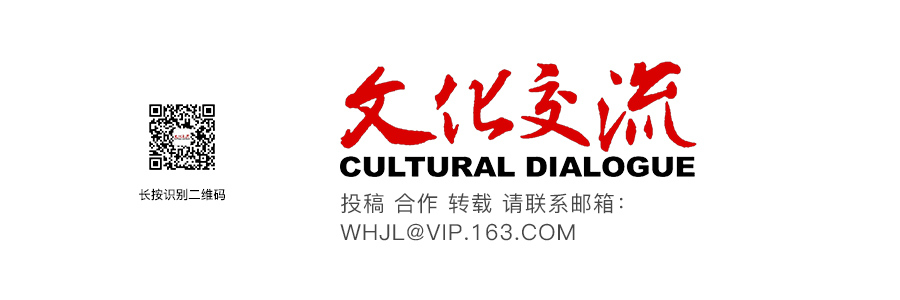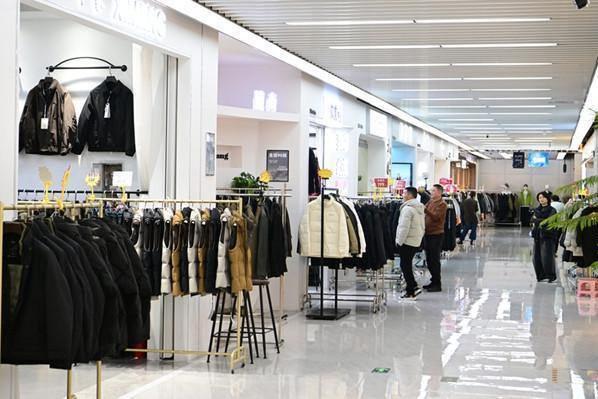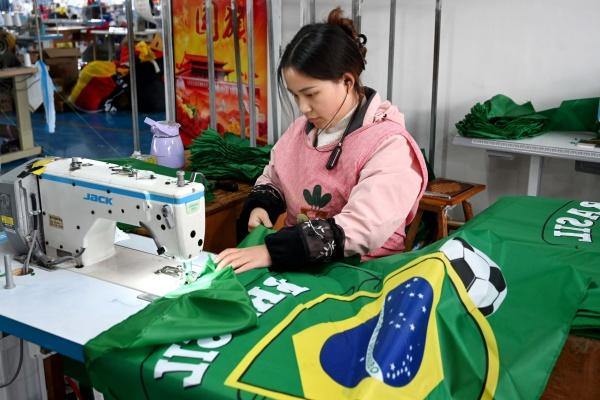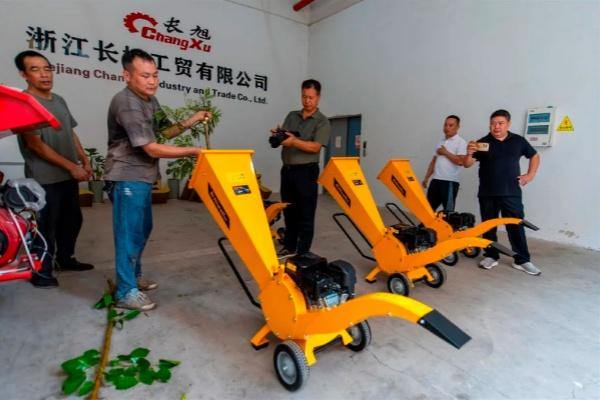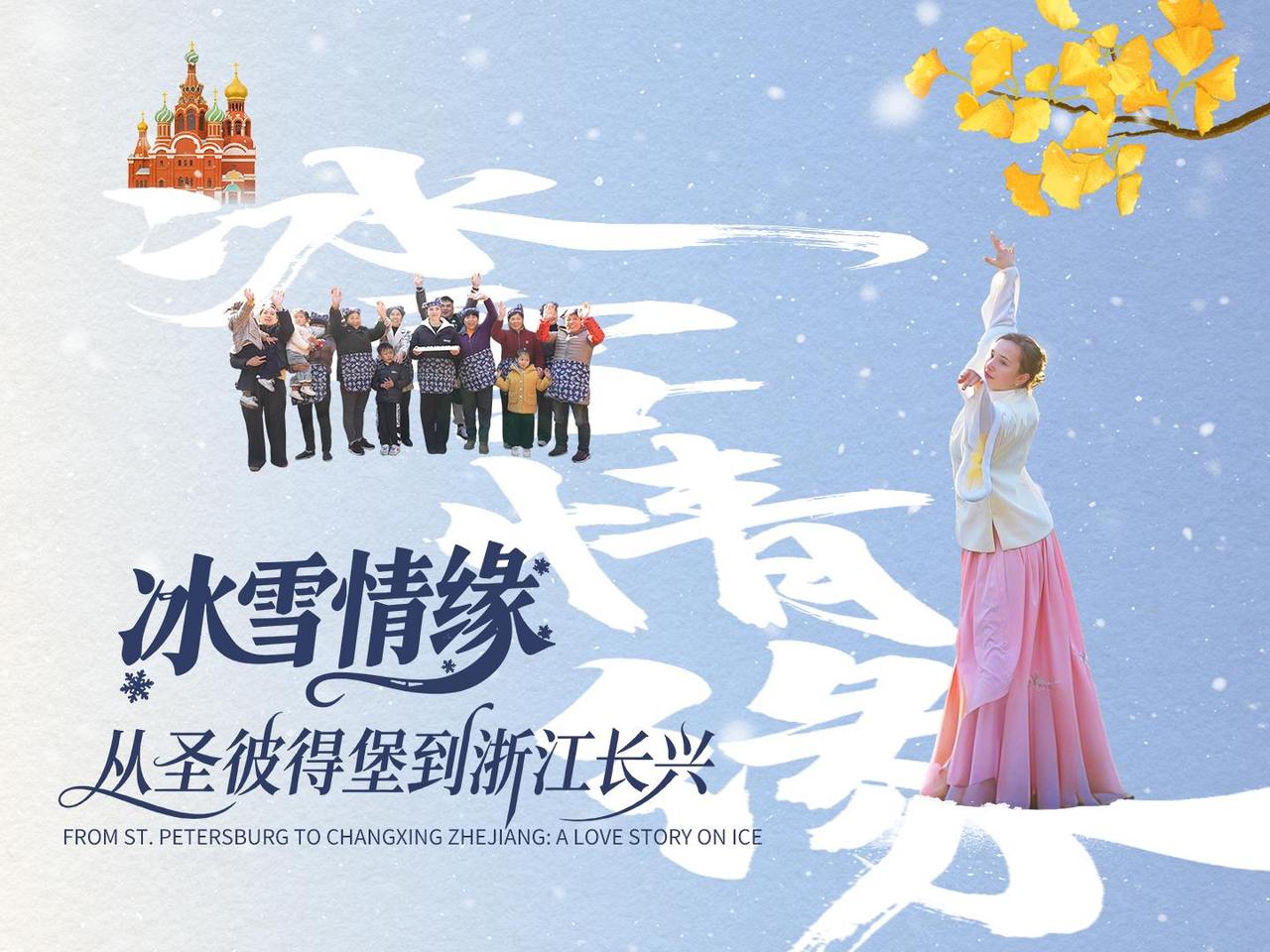三集大型人文电视纪录片《锦绣江南》之《锦程东方》,由浙江电视台国际频道倾力摄制,国际丝绸联盟和杭州丝绸文化与品牌研究中心协力支持,在9个国家先后拍摄了180个小时后精心制作而成,一经播出,好评如潮。而作为丝绸之路的研究者和丝绸文化传承的探索者,我不敢从摄制技术、艺术风格等角度妄加评论,而是想以蚕桑文明、丝绸文化、丝绸之路为视点,谈几点粗浅的观后感。
春蚕:生命与文明
“春蚕到死丝方尽”,千丝万缕的丝,无论多长,春蚕孵化是其起始点。而清明,一个与春天和生命有关的节气,一个缅怀先辈、祭奠亡人的节日,正是耕织江南的农事之始。从这天开始,蚕农们要起早赶一场春雨淅沥中的“蚕花庙会”,开始采桑养蚕。经月之后,蚕历经数次眠蜕,吐丝结茧,“作茧自缚”,直到丝尽而亡,成就了短暂而芳华的一生。
蚕,无需四季的轮回,却以春天的名义,吐露出四季的青春亮丽和不老芳华,织造了江南的耕织之乡和富庶繁华。春蚕的一生,是一曲多么奇异的生命之歌!

无怪乎如今的小学课程《生命的历程》,都以养春蚕为教案设计,让小学三年级学生通过采桑叶在家喂养蚕宝宝,来观察、记录其孵化、进食、休眠、蜕皮、成熟、吐丝、结茧、化蛹的全过程,以此来初步了解生命的概念和生死的过程。
据说,蚕种易得,桑叶难采,城里不少当爷爷、做外公的,或巡视小区,或搜寻郊野,就为采到一把供孙子孙女喂养春蚕的桑叶!甚至有的家长未雨绸缪,孩子还在上幼儿园,就开始在老家买苗种桑,以备来日采用。有需要就有商机,有消费就有市场,于是乎新鲜桑叶订制网购电商应运而生。
也许,让总角(古时小男孩未冠时的发型)孩童理解生命乃至生死,是一个过早而沉重而的课题。但春蚕的一生,却的确是诠释生命乃至文明的绝佳经典。孱弱而幼小的躯体,吃着草一般的叶子,用尽生命的能量,转化成自然界最珍贵的精华,吐出亮丽而坚韧的丝,织造出绚丽华美的丝绸,扮美了人间,并形成源自东方、扩及全球的没有边界的华贵王国!
这,不正是春蚕“孺子牛”般的甘于自我牺牲、乐于无私奉献的精神么?这,不正是在烟雨清明中启幕的《锦程东方》第一集《蚕桑王国》传达的主旨吗?而我,恰恰是在清明亮丽的春天里,开始从这个五千年来男耕女织的文明国度穿越而过——从“世界丝绸之源”潞村的绢片,到江南腹地含山的“蚕花庙会”;从“丝绸之府”湖州世业桑蚕的“蚕姑”顾水娥、史大妈,到柬埔寨暹粒郊外以桑蚕缫丝为生计的文拉尼、索伊;从浙西山区千岛湖新辟的凯喜雅集团桑园基地、云南德宏景颇族的新兴桑蚕工场,到欧洲两大丝绸中心意大利科莫湖畔作为景观植物的古桑树和法国里昂高端真丝原料供应商,甚或是世界桑蚕真丝产业的后起之秀桑巴舞的故乡巴西……在一帧帧镜头瞬间切换之间,让人领略到古往今来桑蚕文明的诞生、传播和兴衰变迁,而串联起这个无疆界桑蚕王国的,就是那春蚕吐出的缕缕细丝。
锦绣:年华与天下
在历史悠久、博大精深的中华人文传统里,曾几何时人们习惯于用最富丽华贵的丝织品“锦绣”,来寄托对富庶生活、成功人生和美好事物的赞美和向往。锦绣前程、锦绣年华、锦绣河山、锦上添花、衣锦还乡、花天锦地、繁花似锦、锦衣玉食……这些散发着丝绸光泽的成语典故,一直是祖祖辈辈多少中国人心中的人生梦想和社会理想。
作为最生态、最环保的衣料之一,丝绸是中国乃至东方古代服饰的主要材料。因为有了丝绸,中华大地丝衣飘飘,霓裳艳影,流光溢彩。因为有了丝绸,中国古代农村的基本生活就是饭稻羹鱼,种桑养蚕,城乡最普及的手工业就是丝织和刺绣,这成为了中古时期中国社会太平盛世的典型图景。
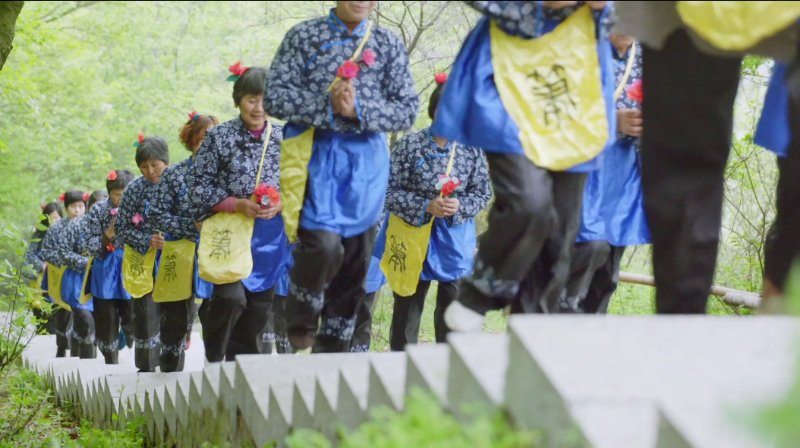
《锦程东方》第二集《锦绣年华》聚焦丝绸华服“旗袍”设计和“龙袍”复制,把代表当今世界丝绸服饰设计艺术和文化传达的精美作品及其设计师,一一呈现在荧屏之上,美不胜收,让人心神向往。
有20年从业资历的英国伦敦服装设计师黛博拉·米尔纳,摆弄着一袭准备参赛“第二届杭州全球旗袍设计大赛”的作品,蓬松的流苏富有宽松的结构感,蓝色的基调和明快的线条是西湖湖光山色的象征,一个未曾到过杭州的西方设计师,把她的艺术才华和文化理解融入丝绸旗袍的创作中。
杭州中式服装定制的著名铺号“振兴祥”的传承人兼掌门人包其文,一边为参加成人礼前来订制旗袍的母女量身裁衣,一边娓娓讲述百年老字号杭州利民中式服装厂的辉煌岁月,在感慨兴衰分合中依然淡定地说:“我相信中国服饰文化是有生命力的!”
在东海之滨的舟山海岛,青春版昆曲《牡丹亭》在婉转悠扬的“水磨腔”中优雅登场,七尺水袖,亦歌亦舞,明眸顾盼,兰指翻转,而袂影流丽、惊艳四座的,正是演员那一身典雅华美的丝绣“行头”。
巴黎高端服装定制秀场的服装设计师郭培,怀揣着外婆的“女红”情结,用现代设计和手工精制,把一袭袭蕴含东方文化元素的华服,一次次秀上国际顶级时装T台;更因为杭州拥有灵秀的城市气质和代表未来的互联网中心,正处于职业巅峰的她把工作重心落户于此。
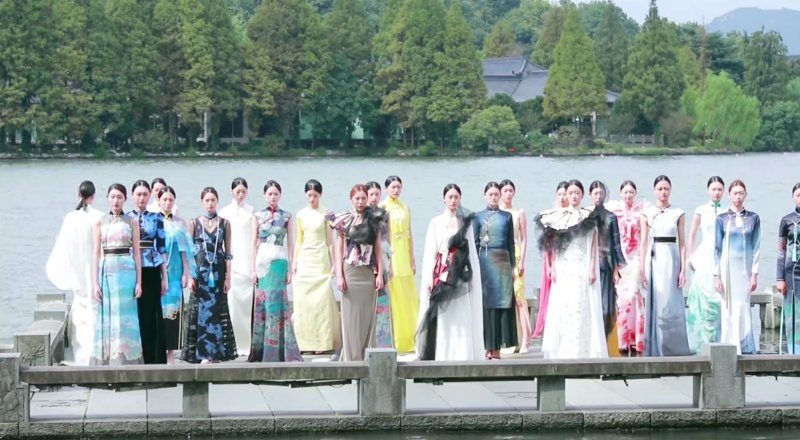
拥有1500年历史、灿若云霞的“云锦”技艺传承人戴建,在高倍放大镜下精心修补着代表九五之尊的一件“龙袍”,寸锦寸金,名不虚传!而他40年前苏州丝绸工学院的同班同学许鼎龙,作为著名国际丝绸服饰品牌万事利集团的高级工程师,则用现代技术潜心探索着“龙袍”织造技艺的复原之路。
以一款“青花瓷”礼仪小姐颁奖服名噪北京奥运会的万事利,十年求索,跻身丝绸织造与营销的世界第一梯队,与代表欧洲真丝面料最高技术水准的法国里昂LVMH公司签署战略合作协议,不仅输出面料,同时输出双面数码印花技术。
丝路:东方与西方
丝绸是大自然对人类的恩赐,蕴含着柔顺、美丽、优雅、高贵、坚韧等审美特质和哲学意蕴,是中华民族敦厚仁和、开放包容的民族性格和国家形象的最好注释。世上恐怕没有其他物产如丝绸这样尊享盛誉,惠泽全人类,无论东方西方,都备受人们的喜爱。
丝绸作为华夏民族的原创发明,四五千年来独领风骚,惠泽东方,并作为大宗商品行销世界各地。
早在商周时期,中原、江南和西南巴蜀地区的桑蚕丝织品,已经东传朝鲜半岛和日本,西经河西走廊传到西北甘肃、新疆和中亚内陆,陆续辗转向西方传播开来。

秦汉时期,中国对外丝绸贸易空前繁荣。尤其是西汉张骞通西域之后,以平纹汉锦为代表的中国丝织品已经远销地中海沿岸的中东(今叙利亚、以色列)和南欧古希腊、罗马地区,推动了中原和边疆、东方和西方的经济文化交流。19世纪后期,德国东方学家李希霍芬(Ferdinand von Richthofen,1833-1905)把这条从长安(今西安)出发,经甘肃、新疆一直西去,经过中亚、西亚,最终抵达罗马的商贸之路,名之为“丝绸之路”,并成为国际学术界普遍采用的东西方文化交流的代名词。
这条“丝绸之路”,“联通”亚欧大陆的东西南北中,“网聚”东西方不同文明圈,是古代东西方之间商贸物流和文化交流的大通道,也是中华文明与世界文明交流互鉴的大舞台,促进了人类社会农耕文明与游牧、渔猎、商贸、海洋等主要经济形态的交互关系,对中国文化发展和人类文明进步作出了巨大贡献。
几代丝绸人为提升丝织技术、传承丝绸文化、打造丝绸品牌不懈努力,昭示古老的丝绸王国在经历了近代以来的百年疮痍后,正以更加开放的国际视野实现现代丝绸产业的再度辉煌。
在《锦程东方》第三集《锦程之路》之中,无论是国际丝绸联盟秘书长费建明、中国丝绸博物馆馆长赵丰、经纶堂总经理王鹏铖,还是意大利拉蒂公司产品总监达尼埃莱、意大利丝绸行业协会前会长比安奇,他们忙碌奔波的步履背影,难以割舍的丝绸情怀,追求卓越的敬业精神,淡定坚毅的神情目光,无不让人坚信:一条新的丝绸织就的锦程之路正在徐徐展开、不断延伸,无论西东,锦绣无限!
(部分图片来自视觉中国)
Documentary Recalls Chinese Silk and Embroidery
Jincheng Dongfang (Chinese: 锦程东方, literally: Expectations of oriental silk), a three-episode epic documentary titled made by the international channel of ZJTV and supported by the International Silk League and Hangzhou Center for Silk Culture and Brand Studies, was screened in December 2018 on the international channel of Zhejiang Television. It took the filmmakers a long journey through nine countries and 180 filming hours to make the documentary, which has been widely acclaimed by audiences and critics alike. This brief review here focuses on the respective themes of the three episodes of the epic documentary.
Sericulture: life and civilization
The documentary starts with silkworm farming in springtime. How appropriate! In Chinese culture in general and poetry in particular, silkworm is closely associated with spring. In Jiangnan, a poetic geographic name for the region in the south of the Yangtze River Delta, the silkworm season starts on the day of Qingming, a ceremonious festival when Chinese people visit ancestral tombs and hold a sacrifice in commemoration of the dead and celebrate the joy of spring. Though silkworm farming lasts beyond the spring, it is closely associated with the spring in cultural contexts. In primary schools in Zhejiang Province, silkworm in springtime is the most convenient and appropriate subject for third graders to learn about the mystery and wonder of life. From eggs to silkworms, and from cocoons to moths and back to new eggs, silkworms under the watch of children display the mystery of life and death and back to life again in a whole cycle. Silkworm cultivation in classroom and home gives youngsters a glimpse into the insignificance of silkworms and the dazzling glory of silk, into the short-lived silkworms and the real and symbolic fabrics they have contributed to human history and civilization. The first episode suitably portrays sericulture as the foundation of the iridescent fabrics of civilization. It depicts individual silkworm farmers as well as industries and businesses at home and overseas.
Embroidered Silk: Glory and Empire
In Chinese culture and language, 锦绣 (literally embroidery on silk) is a phrase that lauds the beauty of life, the success of careers, the grandeur of land. The phrase gave rise to many other phrases and idioms that have long since woven into the dream and glory of individuals and empires. For many centuries of the past, silk was a major fabric that added color and luxury to life and sericulture was a prominent component of rural life in the south of China. In the cities of Jiangnan in feudal times up to the early 20th century, silk weaving and embroidering were two major industries. The second episode shows how modern fashion makers imagine and design Qipao, a long robe for women in the Qing Dynasty, and how artists bring back the lost art of making “dragon robe” which emperors of the past once wore.
Silk Roads: East and West
The third episode rightly chooses this perspective to view the historical depth and width of silk. A blessing given by nature to human, silk symbolizes softness, beauty, elegance, grace, fortitude and resilience, etc. As silk has been around for several millennia, many people think it contributes to Chinese aesthetics and philosophy and explains our national characteristics and ideology. In terms of time and luxury, nothing but silk has enjoyed such a universal appeal across the world. As long as about 4,000 years ago, silk was a major commodity China exported to the outside world. History records that silk products from China were shipped as early as the Shang Dynasty (1,600-1046BC) to the Korean Peninsula and Japan. Silk products also went westward during the Shang. They were carried through silk routes to Gansu, Xinjiang and Central Asia and then gradually to the far west.
Silk trade in the Qin (221-207BC) and the Han (202BC-220AD) dynasties flourished between the east and the west. The textile of plain weave from the Han Dynasty was shipped to Syria, Israel, Greece and Rome all around the Mediterranean Sea. This trade not only promoted cultural and economic exchanges between the west and east but also boosted multilateral ties between the central regions and border regions of China. Ferdinand von Richthofen (1833-1905), a German scholar of the east, accurately named the ancient trade routes that connected China and the west as Silk Roads. Today, silk is no more a Chinese industry. Some other parts of the world are also engaged in making refined silk products. The third episode highlights some silk professionals in both India and Italy.
